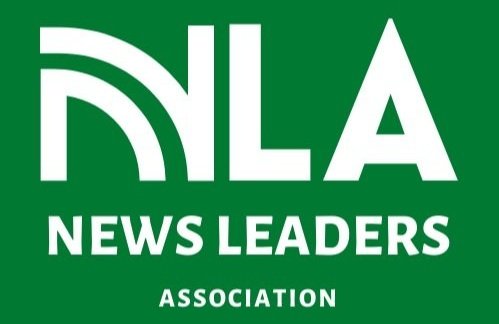Recap: Transformative Transparency Exchange: Support for LGBTQ+ journalists
On June 18, we held the fourth session in NLA’s new Transformative Transparency Exchange series. This month’s TTE: Support for LGBTQ+ journalists was presented in partnership with NLGJA: The Association of LGBTQ Journalists. The candid discussion focused on the experience of being an LGBTQ+ journalist in today’s newsroom.
The event was moderated by Sewell Chan, Los Angeles Times Editorial Page Editor, and NLA board member. Panelists included Sharif Durhams, managing editor at The News & Observer and president of NLGJA: The Association of LGBTQ Journalists; Jamie Stockwell, deputy national editor at The New York Times; Neal Broverman, editor-in-chief at The Advocate; and Neda Ulaby, a correspondent for NPR’s arts desk.
Here is a recap of the candid discussion:
When asked about being out at work, our panelists had similar responses. They said that while it has not always been easy, each of the panel participants said they had been openly gay their entire career. One noted that if they were able to survive coming out to their conservative family in high school, there was no way they were going back in the closet for a job.
The panelists shared a strategy that they learned from other gay journalists, which is to share your LGBTQ+ Association membership on your resume to see how open the work environment would be. If you aren’t rejected for the job, it can be considered to be at least a “comfortable enough” newsroom.
There was consensus on the positive impact of being an LGBTQ+ leader in terms of how being queer has affected their own leadership and management styles. Knowing what it feels like to be part of a marginalized community provides a different vantage point; it makes you a more empathetic, open-minded leader and journalist. It’s a “superpower.”
Being in a leadership role as someone who is queer can also provide an opportunity to reframe conversations around Pride, relationships, identity, parenting, and transgender issues. This allows more narratives to be told through the LGBTQ lens and to be a normal part of the discussion.
All panelists agreed a diverse pool of talented people and leaders were critical to mainstream newsrooms making needed changes. Having a seat at the table is key. “It’s important to make sure that gay people are seen as a part of everyday life in every way.”
When asked about their experiences working in gay press, our panelists were eager to share. The gay press was once an easy door in for new LGBTQ+ journalists, but it’s a lot harder to break in now, according to our panel. Organizations are suffering some of the same problems facing mainstream print media. Journalism, as a whole, is evolving and the business model is still being refined.
Speakers shared the following tips on how to support fellow LGBTQ+ journalists:
Be there for each other and be willing to talk about difficult issues
The pandemic presented new interaction challenges - be creative
Value institutional knowledge - don’t count anyone out
Share your pronouns, if possible add them to your bylines, to make it more acceptable for everyone to do so
Strive to never make anyone uncomfortable
Work hard to change the face of newsroom management
On the impact of young LGBTQ+ journalists in the newsroom, our panel strongly believes that young queer journalists, journalists of color and allies are going to change the industry completely in five years. This is because they are willing to challenge current norms and practices. Mainstream news organizations need to accept the challenge and question all of its policies and the way things have always been done.
As the conversation came to a close, the panel agreed that while things are better, LGBTQ+ journalists are still trying to break through the remaining glass ceiling. There are still far too few large news organizations with LGBTQ+ executive leadership. We need to be willing to address current leadership about the lack of diversity.
This event series offers support and space for marginalized journalists through panel discussions and open dialogue. It’s tied to our larger effort — the Transformative Transparency Project — which will provide the numbers, narratives, and knowledge to assist news media stakeholders in undertaking reforms that address the critical lack of newsroom diversity. We hope it helps to bring transparency to issues that take underrepresented people out of the industry.
Due to the nature of the discussions — and to keep these safe spaces — we won’t record sessions in this series. Sign up to receive updates on all events in this series.

